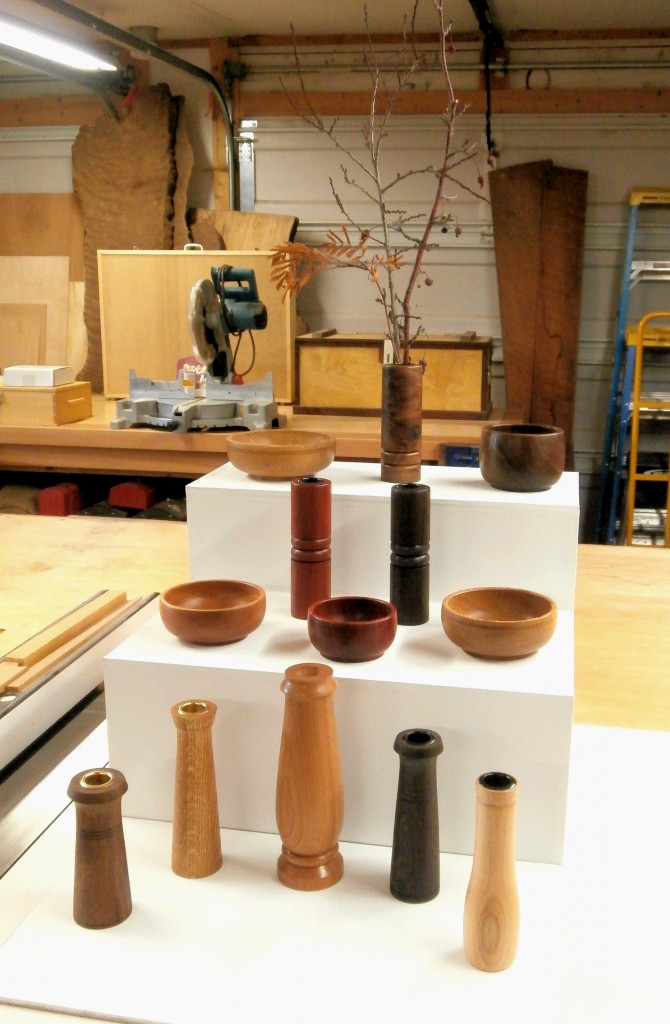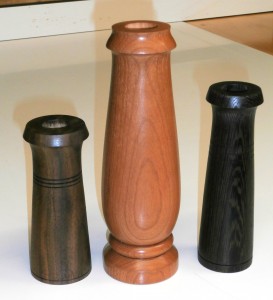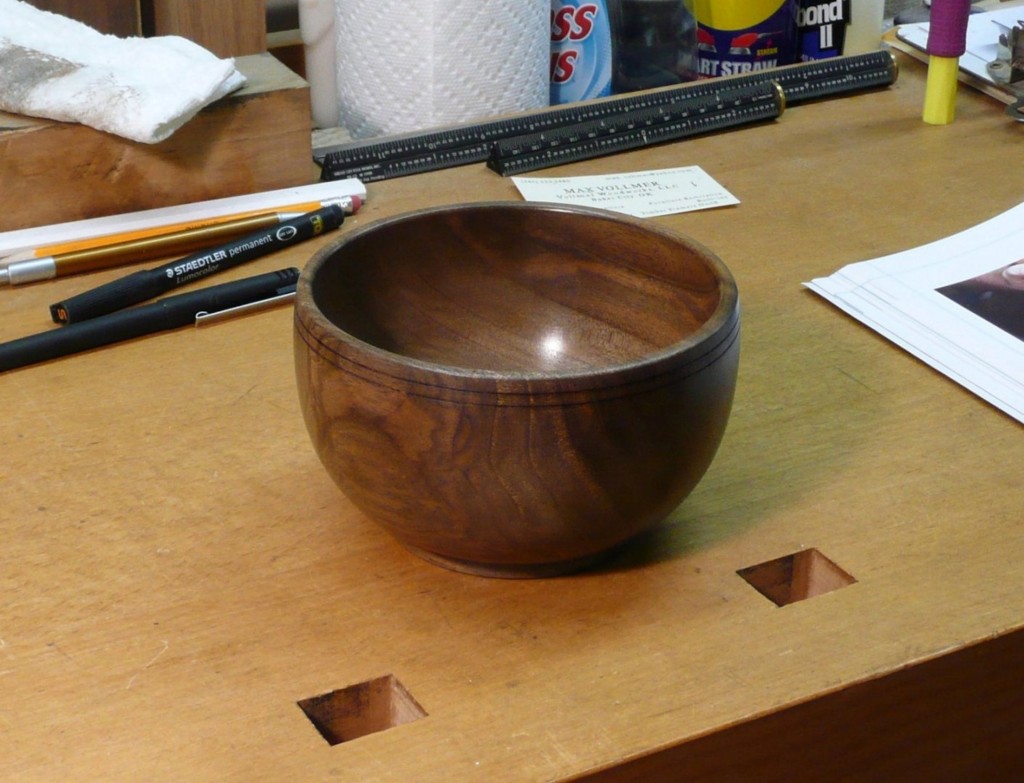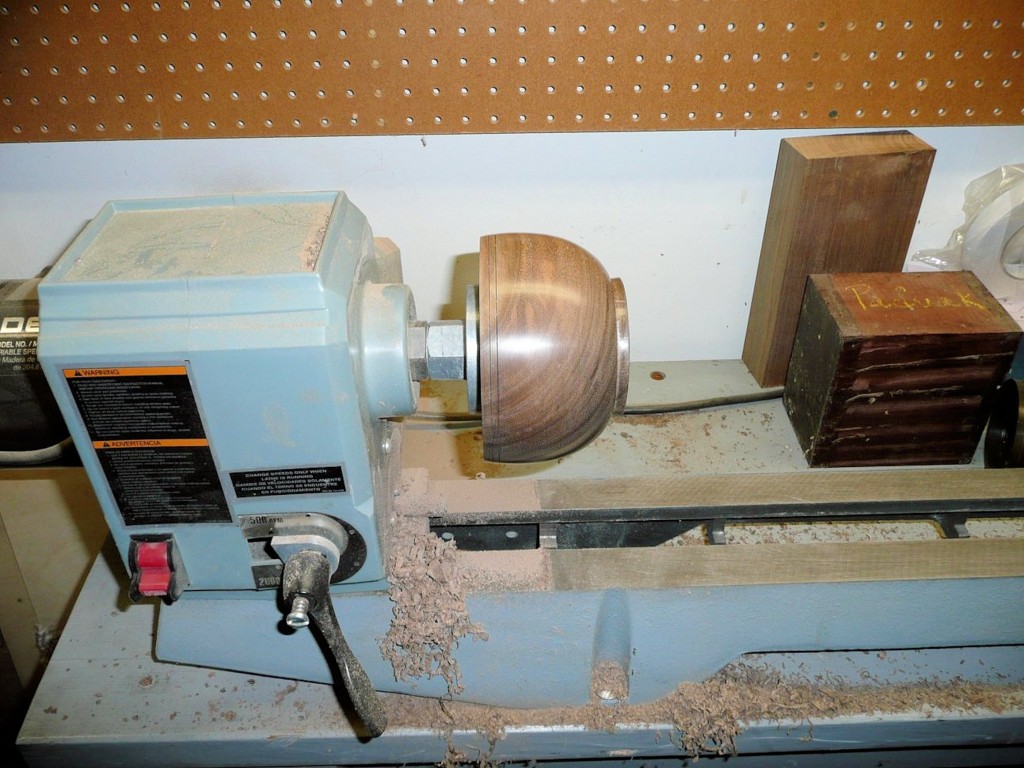This is a mock-up of a small display of work I created for sale. The woods used for the weed pots/vases include Claro walnut, white oak, black cherry, wenge, sugar maple, and paduak. The bowls include white oak, Claro walnut, black cherry and paduak.
Tag Archives: Claro walnut
Free Hand Turning Vase Shapes
I’m considering trying to sell turned “weed pots,” made from various species of wood, in our local coop art gallery. First, I need to refine my technique for turning, drilling out, and finishing them and decide on a practical size or sizes. I also need to see how quickly I can finish one. (Click on any image to enlarge)
These examples are, from l. to r., 5″ tall in Claro walnut, 8.5″ tall in American black cherry, and 6″ tall in Wenge.
Claro Walnut Bowl
This is bowl #1, the first bowl I ever turned. It was made from a small block of Claro walnut, about 6″ square. I would encourage anyone thinking of learning to turn bowls on a lathe to go for it. It’s not easy at first, but as with anything, perseverance pays off. If you don’t have the opportunity to learn in a class or from an experienced turner in person, as I didn’t, then I can highly recommend Richard Raffan’s video, “Turning Wood,” published by Taunton Press. Raffan’s books on turning are an inferior substitute for seeing the techniques explained and demonstrated in the video. (Click on any image to enlarge)
Here’s a partial picture of the lightweight 1/2 HP Delta wood lathe I started with.
I sold this lathe because it was too light, under powered, and of dubious quality. Buy the heaviest and best lathe you can afford. If turning bowls is what you want to do, I also recommend that you buy heavier duty, high speed steel (HSS) turning tools. A 3/8″ thick bowl scraper will be much easier to control and yield better results than one 1/4″ thick. The same goes for gouges, heavier duty is better for bowls. Why? Because the thicker, heavier tool will be better at dampening vibration. This is especially true the further the cutting edge of the scraper or gouge is extended out over the tool rest, which happens when hollowing the interior.





